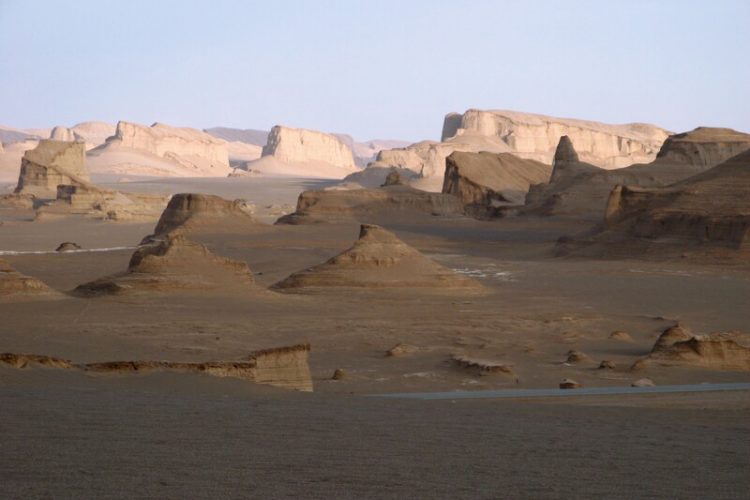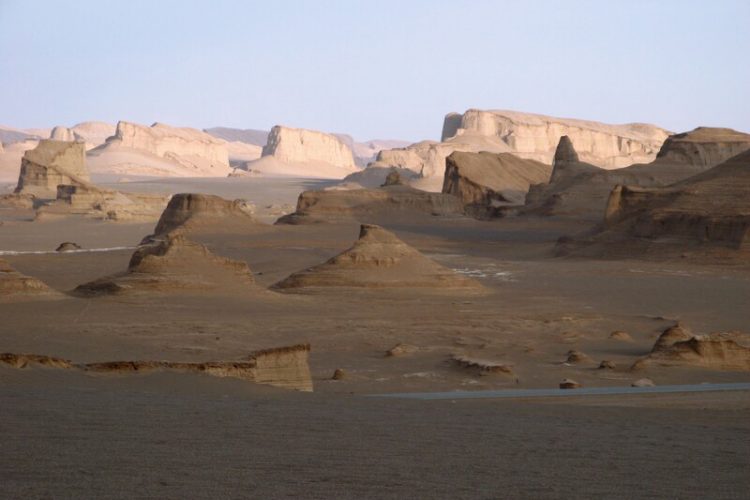
The Hottest Place On Earth Feels Like Walking on a Hot Iron Pan
Published on February 18, 2021 at 2:58 PM by Mc Noel Kasinja
Iran’s Dasht-e Lut desert is only the 25th largest desert in the world, but it holds the record for the highest ;and surface temperature ever recorded, over 70 degrees Celsius.
Dasht-e Lut (Persian for “Emptiness Plain”) is a large salt desert that, scientists believe, formed on the bottom of a sea. Millions of years ago, tectonic shifts caused the bottom of the sea to rise, with the water slowly evaporating due to the high temperatures. Today, it’s a barren land about 51,800 square kilometers in size, surrounded by mountains on all sides, which contributes to the record-setting temperatures recorded here, as they prevent humid air from the Mediterranean and Arabian Seas to reach it.
 The Moderate-Resolution Imaging Spectroradiometer installed on NASA’s Aqua satellite surveyed the globe between 2003 and 2010 and the collected data revealed that the hottest land temperature on average was recorded in Dasht-e Lut. The highest temperature recorded here by the satellite was 70.7 degrees Celsius, in 2005, but the Iranian desert also had the highest yearly temperature in five of the seven years of satellite data.
The Moderate-Resolution Imaging Spectroradiometer installed on NASA’s Aqua satellite surveyed the globe between 2003 and 2010 and the collected data revealed that the hottest land temperature on average was recorded in Dasht-e Lut. The highest temperature recorded here by the satellite was 70.7 degrees Celsius, in 2005, but the Iranian desert also had the highest yearly temperature in five of the seven years of satellite data.
The hottest part of Dasht-e Lut is a region called Gandom Beryan, a plateau covered with volcanic black pebbles, about 480 square kilometers. The dark pebbles are one of the determining factors for the extreme land temperature
recorded here, as they absorb more energy from sunlight, only reflecting a fraction of it.
Interestingly, the name Gandom Beryan (“Toasted wheat” in Persian) is inspired by a local legend about a load of wheat left in the desert that became scorched after a few days. With temperatures reaching nearly 70.7 degrees Celsius, that legend doesn’t sound so hard to believe.
Another contributing factor to the extreme heat of Dasht-e Lut is the lack of vegetation. The salty soil makes it very hard for even the toughest of plants to survive, and the only signs of plant life in the area are desert lichen and tamarisk, resilient shrubs that can grow up to 10 meters tall.
“The hottest temperatures were observed at locations without vegetation,” climatologist Roger Pielke Sr. of the Cooperative Institute for Research in Environmental Sciences at the University of Colorado told NASA. “This means that if landscape change in a region results in less vegetation, the maximum surface temperatures are expected to be hotter. If an oasis is developed by irrigation from subsurface water in a desert, the maximum temperatures would be less.”
Surprisingly, even though you could fry an egg on the sand and rocks of Dasht-e Lut, the air temperature in the area averages around 39 degrees Celsius.
Subscribe to our Youtube Channel:

